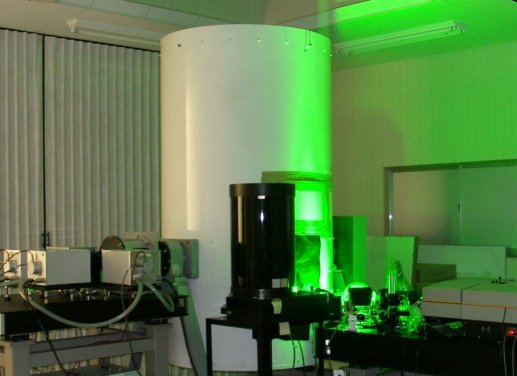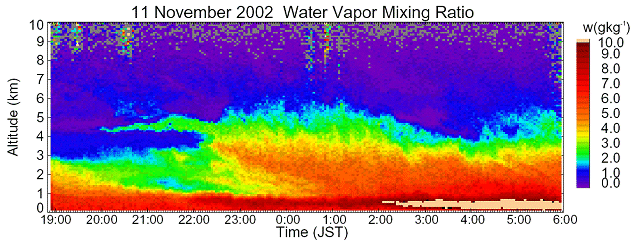Lidar

Lidar, light detection and ranging, is a kind of radar, radio detection and ranging, in which the laser light pulse is employed instead of radio wave pulse.
Lidar uses the light pulse generated by laser. Light pulse transmitted into the atmosphere is scattered by the atmospheric molecules, aerosol and cloud particles and partially returned back to the transmitted direction. By collecting the return light with telescope and analyzing the strength and wavelength shift of the light, atmospheric minor constituents such as ozone, carbon dioxide, water vapor, wind speed and direction, temperature and clouds can be measured. Compared with the other instruments, vertically resolved and continuous measurement is the superior characteristics of the lidar measurement.
The lidar for measurement of water vapor and aerosol is shown in the left picture. The green laser light of 532nm is employed and 30 pulses of which energy is 800mJ are transmitted into the atmosphere every second. One meter diameter telescope is used to collect the backscattered light. The vertical and temporal resolution of the observation are 100m and 3 minutes, respectively, which are higher than the other observational methods. The vertical observable range is from 100m to 10km.
The temporal and vertical cross section of the water vapor mixing ratio measured with the lidar is shown in the figure below. Red color shows water vapor rich air mass. Dense water vapor air mass was present in the altitude region lower than about 5km that shows temporal variation.

